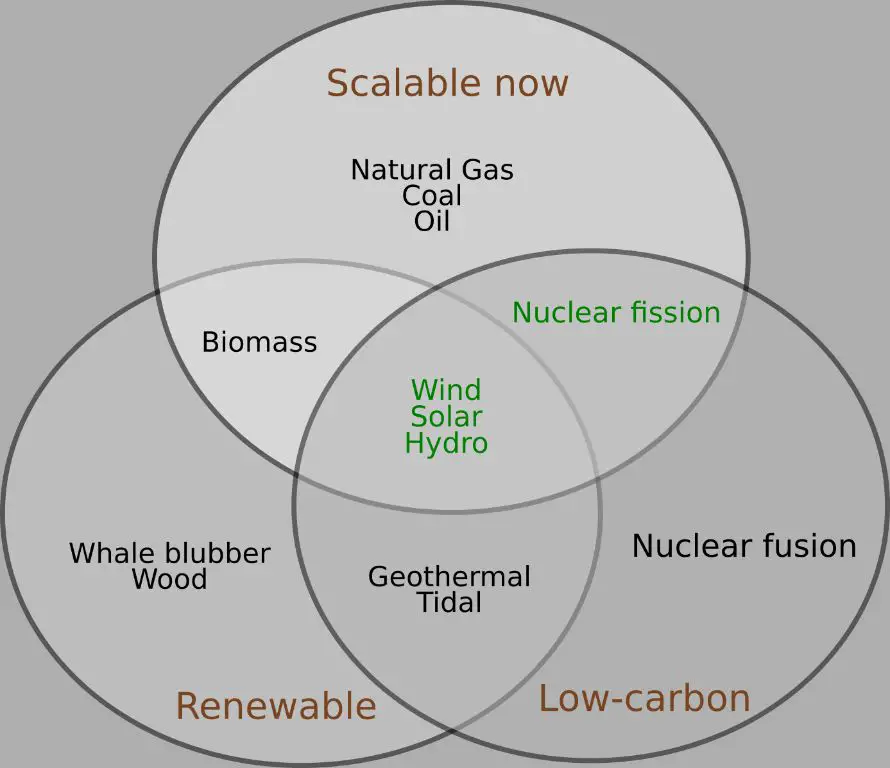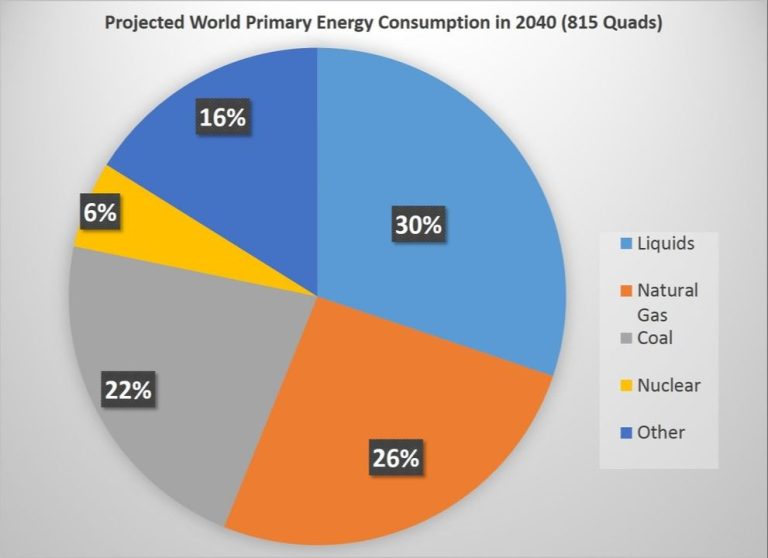Is Nuclear Energy 100% Renewable?

Nuclear energy is the energy released from the nucleus of atoms through nuclear fission or fusion. Fission splits the nucleus of a heavy atom like uranium or plutonium into lighter atoms, releasing energy in the process. Fusion combines light nuclei into heavier ones, also releasing energy. The energy released can be turned into useful heat and electricity.
Renewable energy comes from naturally replenished sources like sunlight, wind, water, plants, and geothermal heat. Common renewable sources used for electricity include solar, wind, hydroelectric, geothermal, and some forms of biomass. Renewables are considered cleaner alternatives to fossil fuels.
There is debate around whether nuclear should be considered renewable. While the fuel sources are not replenished on a human timescale, some argue nuclear is low-carbon and reliable like other renewables. This article will explore both sides of the argument.
Nuclear Fuel Sources
The vast majority of nuclear reactors today use uranium as fuel. Uranium is a relatively abundant metal found in rocks and seawater around the world. The key countries that mine and supply uranium are Kazakhstan, Canada, and Australia, which together account for over 60% of global uranium production. Significant uranium reserves have been identified to meet over 100 years of current demand.
While uranium ore deposits are spread globally, the largest known reserves are located in Australia, Kazakhstan, Russia, Canada, and South Africa. Australia possesses around 30% of the world’s reasonably assured uranium resources. Exploration continues to identify new deposits, including high-grade ore bodies like Cigar Lake in Canada which can meet several years’ worth of demand from a single mine site.
In addition to terrestrial sources, uranium is dissolved in the world’s oceans at low concentrations. Technological advances may eventually allow extraction of ocean uranium cost-effectively, further boosting global uranium availability for nuclear power generation.
Nuclear Fission Process
Nuclear fission is the process that produces energy in a nuclear reactor. Fission occurs when a neutron strikes a larger atomic nucleus, such as uranium-235, causing it to split into smaller nuclei called fission fragments. This splitting process releases a tremendous amount of energy in the form of heat and neutrons that can trigger more fissions in a chain reaction.
According to the MIT Nuclear Reactor Laboratory, when a U-235 nucleus absorbs a neutron, it becomes unstable and splits into two smaller nuclei, ejecting two or three new neutrons. The released neutrons can interact with more U-235 nuclei, sustaining the chain reaction. Each fission event releases on average 200 million electron volts (MeV) of energy. The kinetic energy of the fission fragments, neutrons, and other byproducts of the reaction is converted to thermal energy that can be harnessed to produce electricity.
In a nuclear reactor, neutron-absorbing control rods are adjusted to regulate the chain reaction. The heat from fission is removed by a coolant and used to make steam to power turbines and generate electricity, similar to fossil fuel plants. Nuclear fission generates nearly 20% of electricity in the United States, providing a stable baseload power source.
Waste Byproducts
Nuclear power generation produces radioactive waste that requires careful management and storage. The main byproducts are spent nuclear fuel, transuranic waste, and low-level radioactive waste. Spent nuclear fuel contains uranium and plutonium and is highly radioactive, generating a lot of heat. After being removed from a nuclear reactor, spent fuel is stored in special pools of water or dry casks to allow the radioactivity and heat to decrease over time. Most nuclear waste management strategies involve containment and isolation of the waste, with permanent deep geological disposal seen as the long-term solution (1). However, no country has yet established such a repository. In the U.S., plans for a permanent underground repository at Yucca Mountain in Nevada have been halted due to political opposition (2). Until a long-term geologic repository is available, spent fuel will continue to be stored at nuclear plant sites. Other radioactive wastes with lower levels of radioactivity can be disposed of in near-surface facilities. Overall, effective management of nuclear waste is crucial for the sustainability and public acceptance of nuclear power.
Safety Concerns
Nuclear power plants have multiple safety systems and procedures in place to prevent accidents and minimize risk. According to the World Nuclear Association, nuclear reactors are designed with defense-in-depth measures including multiple barriers and backup safety systems to cool the reactor (source). The U.S. Nuclear Regulatory Commission oversees strict regulations and requirements for nuclear reactors, including extensive research and analysis into accident scenarios and fuel damage prevention (source).
While nuclear accidents can result in dangerous radiation exposure, incidents are extremely rare thanks to modern safety protocols. The nuclear industry maintains rigorous standards for plant safety and emergency preparedness (source). Radiation exposure for nuclear plant workers is carefully monitored and regulations limit doses well below unsafe levels.
Carbon Emissions
Nuclear energy has an extremely low carbon footprint compared to fossil fuel sources like coal and natural gas. According to the U.S. Energy Information Administration, nuclear power reactors do not produce any direct carbon dioxide emissions during operation [1]. Over the full life cycle of a nuclear plant, including construction, mining, enrichment, and waste management, the carbon emissions are comparable to renewable sources like wind and solar.
Most analyses estimate nuclear energy’s carbon footprint between 15-50 grams of CO2 per kilowatt-hour. In comparison, natural gas produces 400-500 gCO2/kWh and coal produces around 800-1000 gCO2/kWh [2]. This makes nuclear energy’s carbon emissions profile similar to wind and hydropower.
With nuclear power producing minimal carbon emissions during operation, it can play a major role in reducing greenhouse gas emissions and combatting climate change compared to fossil fuel sources.
Cost Factors
Nuclear power plants have very high upfront costs for construction. According to the Nuclear Energy Institute, the average reactor costs $6-9 billion to build over a construction period of 5-7 years. This large capital investment means financing costs make up a large portion of the overall cost of nuclear power.
Beyond construction costs, there are also costs for uranium fuel, operations and maintenance, waste management, and eventual plant decommissioning. Fuel costs account for about 28% of the total lifetime costs of a nuclear reactor. Operations, maintenance and other ongoing costs account for about 66% of lifetime costs.
The operating lifetime of a nuclear reactor is estimated at around 60 years. Over that full lifetime, estimates put the total cost of a nuclear power plant between $50-100 billion, or around $0.12-0.20 per kWh based on a 90% capacity factor.
According to the Nuclear Energy Institute, new nuclear power plants can be economical and competitive assuming reasonable construction costs, financing terms, capacity factors, and wholesale electricity prices. However, cost overruns during construction and changes in electricity market prices have challenged the economics of some nuclear projects.
Renewable Comparison
Nuclear energy is often compared to renewable energy sources like wind, solar, and hydroelectric power. While nuclear does produce low carbon electricity like renewables, there are some key differences.
In terms of reliability, nuclear plants have very high capacity factors, usually around 90%, meaning they generate close to their maximum output consistently.[1] This compares to capacity factors of around 25-40% for solar and wind. The intermittent nature of renewables like wind and solar requires backup power sources when the sun isn’t shining or wind isn’t blowing. Nuclear does not face this issue.
However, the levelized costs of nuclear are generally higher than renewables, at around $129/MWh for nuclear compared to $28-54/MWh for onshore wind and solar.[2] Nuclear also requires very large upfront capital investments in the billions of dollars, while renewable projects can be built incrementally at smaller scales.
In terms of safety and environmental impact, nuclear has caused major disasters like Chernobyl and Fukushima, while renewable energy poses minimal risk. However, nuclear produces very low lifecycle carbon emissions comparable to wind and solar.[1]
Overall, while nuclear does generate consistent low carbon energy, renewable sources are generally cheaper and safer, with minimal environmental impacts.
[1] https://www.orano.group/en/unpacking-nuclear/is-nuclear-power-a-renewable-energy
[2] https://changeoracle.com/2022/07/20/nuclear-power-versus-renewable-energy/
Policy and Regulation
The nuclear industry in the United States is highly regulated by the federal government. The main regulatory body overseeing commercial nuclear energy is the Nuclear Regulatory Commission (NRC) which was established by the Energy Reorganization Act of 1974. Some of the NRC’s responsibilities include issuing licenses for nuclear facilities, overseeing plant operations, and establishing regulations for handling radioactive materials (About NRC).
The NRC’s authority comes from various laws passed by Congress including the Atomic Energy Act of 1954 which provides the fundamental framework for regulation, and the Nuclear Non-Proliferation Act of 1978 which limits the spread of nuclear weapons (Governing Legislation | NRC.gov). The NRC regulates all aspects of the civilian use of nuclear materials including power plant siting, design, construction, operation and security.
In addition to the NRC, other government agencies involved in nuclear regulation include the Department of Energy (DOE) which is responsible for nuclear weapons programs and nuclear research, and the Environmental Protection Agency (EPA) which sets radiation protection standards. Overall the U.S. government maintains strict oversight of the nuclear industry through robust regulation, licensing, and policy.
Conclusion
In summary, while nuclear energy does utilize uranium as a finite fuel source mined from the earth, the extraordinarily high energy density of uranium means that only a small amount is required to generate massive amounts of electricity. With proper reprocessing and recycling, the uranium fuel can be reused multiple times, greatly extending the lifespan of uranium reserves.
Additionally, the nuclear fission process itself does not generate any direct carbon emissions or air pollution, qualifying it as a clean energy source. The process does produce radioactive waste that requires careful storage and disposal, but advanced reactor designs are addressing waste management concerns.
Overall, nuclear energy cannot be classified as 100% renewable since it relies on a mined material. However, with the extremely low carbon footprint, high energy output, and potential for fuel recycling, nuclear does align closely with many of the advantages of renewable sources and serves as a vital low-carbon energy option.




